After the market, Amazon once rose by 12%, and its market value once again exceeded one trillion US dollars. In 2020, Amazon’s growth list responded one step ahead.
This article is published in the Tiger Securities Community
In the US super bull market in 2019, Amazon underperformed S & P by 28.43%, which was slightly behind that of S & P; it also fell behind Apple, which was also FAANG, by 86.16%, and Facebook by 56.57%. Recently, Amazon released Q4 results, and its revenue significantly beat market expectations, responding to concerns about rising costs and slowing growth before the earnings report. After the market, Amazon once rose by 12%, and its market value once again exceeded one trillion US dollars. In 2020, Amazon’s growth list responded one step ahead.
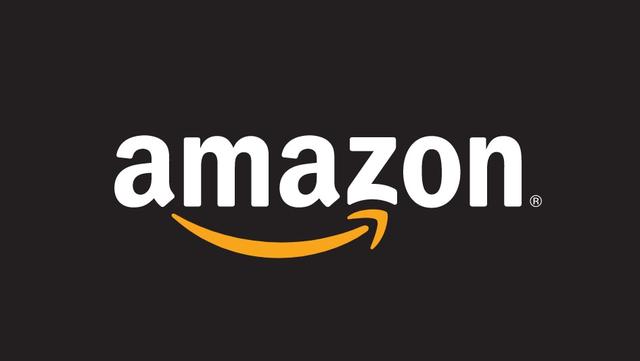
“One day” and Prime members stimulate growth, new quarterly highs of free cash flow
Q4 has always been very important to Amazon. The holiday season is usually the quarter with the highest Amazon revenue, accounting for more than 30% of the entire year. Amazon’s revenue for the quarter increased 21% year-on-year, and net profit rose 10% year-on-year to $ 3.3 billion, all exceeding analyst expectations.
Specifically, the forecast and actual value of each segment also showed a rolling trend this quarter. No wonder it rose after the market.
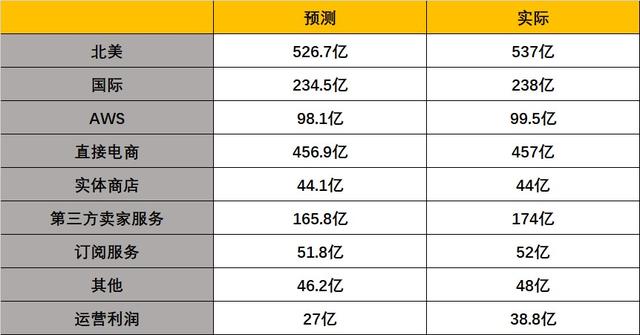
The revenue growth rate of 20.80% is slightly lower than that of 23.69% in the previous quarter, and the net profit has dropped from 26% in the previous quarter to 10% in the previous quarter, which is relatively bright. And free cash flow hit a new quarter, Amazon founder Bezos once said that valuation of Amazon depends on free cash flow.
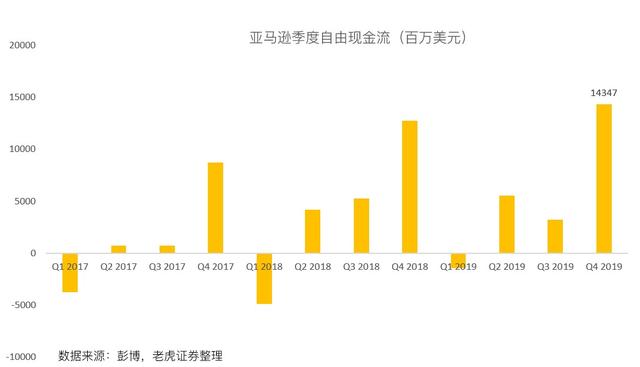
As stated by the former Tiger Securities investment research team, before Q4, the market ’s concerns about rising “one-day” compliance costs and slowing AWS growth have curbed Amazon’s stock price rise. In the fourth quarter, the number of newly added Prime members reached a record high, with more than 150 million paid Prime members worldwide. Amazon’s Prime plan has grown by at least 50% in less than two years.
Tiger Securities investment research team believes that what is worth paying attention to is the cost of compliance. Amazon is about to usher in the first anniversary of the launch of Prime members’ “one-day” delivery standard, which means that the inventory for “one-day delivery” will increase. The sharp rise in distribution costs will come to an end. For the quarter, compliance costs continued to grow at US $ 12.2 billion.
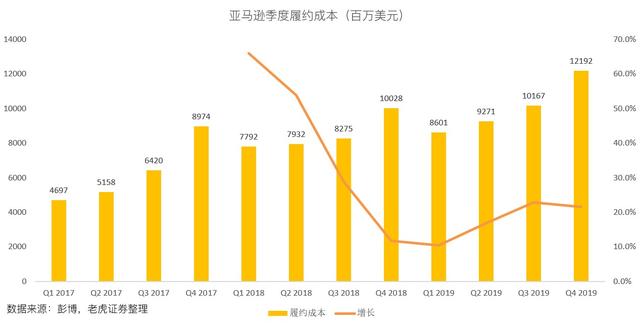
And Amazon also enters logistics. With the investment in logistics, the analysis believes that the cost of each package will drop to $ 6. At a cost of $ 8.25 per package in 2018, if the price reaches $ 6, then each package will save 27% of the cost, which means that it will save $ 10 billion in 2018. As for this quarter, retail business profit margins expanded due to lower-than-expected shipping costs.
AWS’s operating profit rate rebounds, accounting methods are adjusted to improve competitiveness
Tiger Securities investment research team believes that when it comes to Amazon’s financial report, it is necessary to pay attention to the growth of AWS. On the one hand, the profit margin is strong and the current profit is close. On the other hand, the cloud business prospects are future.
In the fourth quarter, AWS revenue was US $ 9.95 billion, an increase of 33.8% year-on-year, and analysts expected US $ 9.81 billion; AWS operating profit increased 19% to US $ 2.6 billion, and analysts expected US $ 2.45 billion.
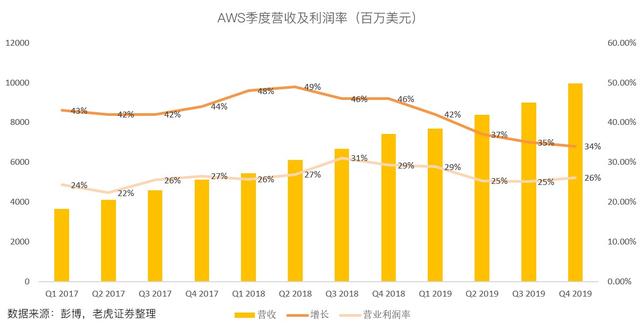
Among them, the operating margin of AWS rebounded in the fourth quarter, rising to 26.1%, showing its flexibility in the increasingly fierce competition, alleviating some of the current concerns, despite the company’s low profit guidance in the first quarter As expected by the market. Also a particularly good news this quarter is that AWS profit margin will be boosted from an accounting adjustment.
According to this adjustment, server depreciation costs will be diluted from the current 3 years to 4 years.
As Google and Microsoft intensify their cloud services, cost reductions due to price cuts may give AWS more room to become more aggressive in pricing and marketing spending. In this way, even if competition intensifies, AWS’s revenue growth can still exceed 30%, while alleviating some concerns about profit margins.
Last
In 2020, “One Day” and Prime members will continue to stimulate Amazon’s revenue growth. Logistics related expenditure Q2 should ease, and profits will be released before the end of the year, supporting long-term growth expectations. As the focus of cloud computing shifts to enterprise sales, what remains to be focused on is the growth and profitability of AWS.
Amazon is no longer the unstable e-commerce company of the past. The company’s net profit in 2019 was $ 11.5 billion, and in 2018 this figure was $ 10 billion. In the previous 23 years, Amazon’s cumulative net profit was $ 7.9 billion. Despite fierce competition, Amazon’s business has a solid future ahead.
This article does not constitute and should not be construed as any agreement, offer, invitation to offer, opinion or suggestion to purchase securities or other financial products. Nothing in this article constitutes an investment, legal, accounting or taxation opinion of Tiger Securities, nor does it constitute a statement of whether an investment or strategy is suitable for your personal circumstances, or any other recommendation for you personally.